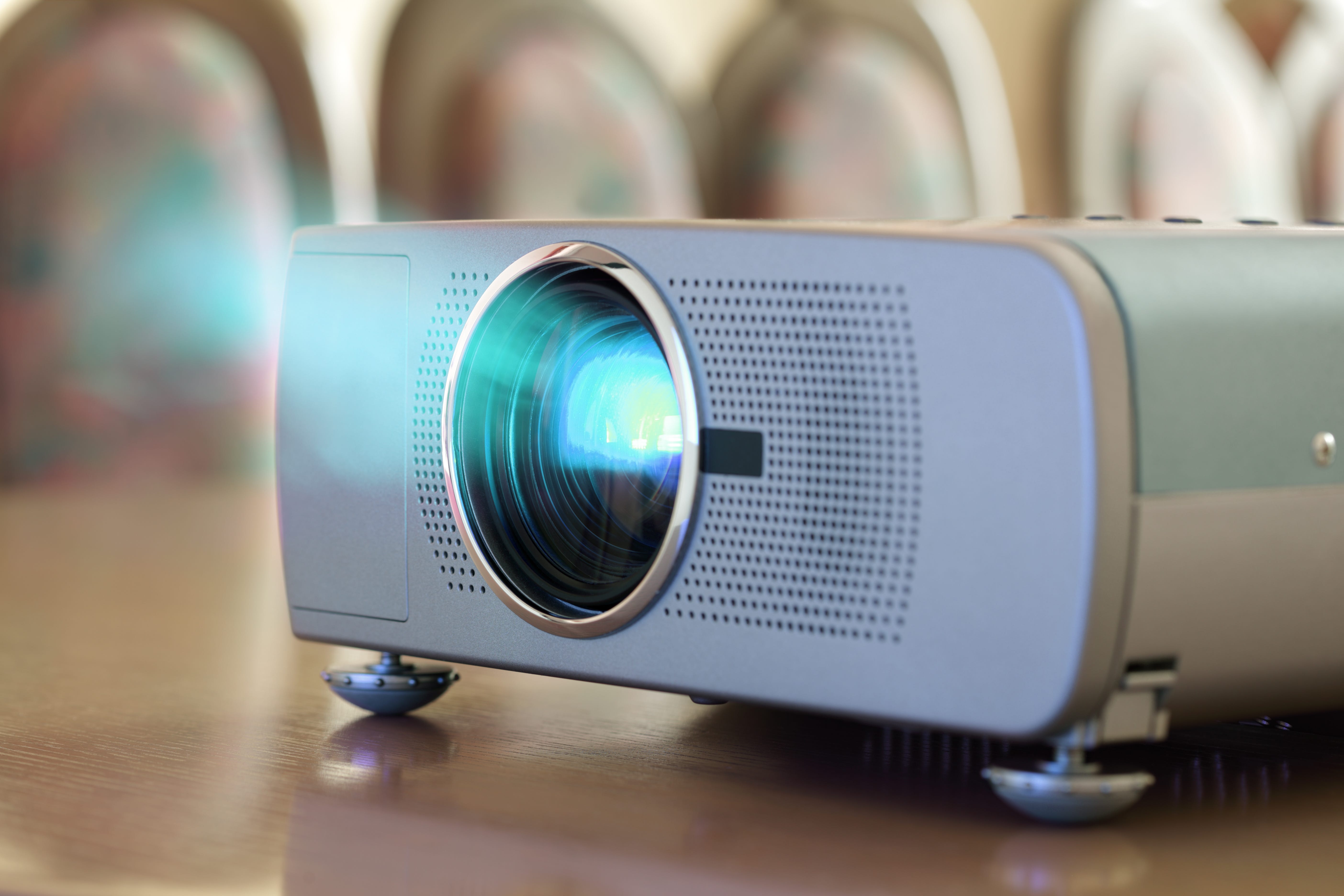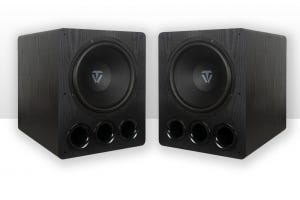
If you are considering buying a projector, it can be difficult to figure out which one is right for you. If you think you can order any projector within your budget and hope for the best -- think again. There are many different kinds of projectors with different specifications for certain uses and environments. There are a few things you need to determine before you shop for a projector, such as:
- Where you will be using the projector: Is it for a fixed home theatre installation, or do you want to travel with the projector?
- If it's for a fixed location, how big is the room?
- How much flexibility do you have for projector placement? Are there limitations on where it can be positioned?
- What media source will you be using? What are the resolution specs of the media source?
- How much control do you have over the lighting in the room?
- What is the size of the screen you will be projecting onto?
Keep these questions in mind, as these will help you determine the kind of projector you need.
Types of Projectors
First, we'll cover the basic categories of projectors designed for different uses, before getting into individual specifications.
Pico Projectors: Also known as pocket projectors, these are small portable projectors designed for easy travel and versatile use in many different environments. They are generally more affordable and offer limited quality compared to a standard size projector. Pico projectors will have significant limitations on image size, brightness, and optical zoom. These make great gifts for teens or simple projecting solutions for on-the-go home theatres.
Multimedia Projectors: This is the most common type of projector, designed for general purpose versatility. They are often used for casual or simple applications that don't require advanced resolution specs, like PowerPoint presentations or photo slideshows at events like weddings. Brightness typically ranges from 2500 to 4500 lumens, and zoom range can be as high as 1.5x, which means you may need moderate flexibility on projector positioning within the room. Multimedia projectors commonly have VESA computer resolutions rather than HD video resolutions.
Short Throw Projectors: This is considered a subcategory of multimedia projectors; these are designed to have a throw ratio of less than 1:1, or projecting a very short distance from the screen -- typically between 18 and 24 inches. They often are designed for fixed installations and do not offer zoom range. They also usually don't offer more than 3000 lumens, as they are best suited for small screen sizes.
Home Theatre Projectors: Designed specifically for home theatre setups, these projectors focus on image quality rather than versatility. They offer lower brightness capabilities (below 2000 lumens) and higher zoom ranges (up to 2x). If you plan to use a projector for a home theatre, be sure you have full control over the lighting in the room before purchasing a home theatre projector. Too much light in the environment will limit the contrast the projector can produce, no matter how high quality the color resolution is. These projectors tend to have advanced cooling systems to minimize noise levels, but this makes them bulkier and heavier than most projectors, and they rarely ever support inverted installation. They follow HD video resolution; almost all of them are Full HD and many are 4K. Many companies will attempt to rebrand a multimedia projector as a home theatre projector -- look out for high lumen ratings, VESA resolutions, and zoom ranges below 2x.
Large-Venue Projectors: Also known as fixed-installation projectors, these are designed specifically for commercial sized venues with fixed professional installations. Rather than offering zoom range, they often have interchangeable lenses if different zooms are required. They offer the highest brightness capabilities, from 4500 lumens up to 20,000 lumens and beyond. Some models support "stacking", or combining the output of two or more projectors to boost brightness even further. Large-venue projectors are typically used for movie theatres, stadiums, churches, and lecture halls.
Throw Ratio
Throw ratio is one of the most essential specifications on a projector. The throw ratio refers to the distance from the projector lens to the screen divided by the width of the screen. For example, if the distance from the screen to the projector is 20 feet, and the screen width is 10 feet, then the throw ratio is 2:1. So, one key consideration to make before choosing a projector is determining if the throw ratio can accommodate your home theatre dimensions. If you need to project onto a large screen in a small space, you will need a projector with shorter throw capabilities. It's always a good idea to place the projector as close to the screen as possible within the limitations of the throw ratio, to preserve a crisp image and reduce brightness requirements. If you don't have a screen yet, a general rule of thumb for optimal screen size is 1/5 of the distance from the furthest intended viewing point. You can also opt for a home theatre package to guarantee that the projector is designed to display on your screen.
Brightness
The brightness capabilities you need depend on the amount of ambient light in the room. For high quality home cinema projection, it's imperative that you have full control over the lighting, and you can make the room almost completely dark at any time of day. This is important because more lumens doesn't mean a better image or better projector. Higher quality images with optimal color contrast are produced at lower lumens, and even projectors with powerful brightness capabilities can't produce a crisp image in a bright room. If you don't have complete control over the lighting, then opt for a projector with at least 3000 lumens -- this will typically fall into the category of a multimedia projector. One of the worst mistakes you can make is purchasing a high-end projector and not being able to produce a crisp image.
Resolution
While resolution may seem like the most important specification, it actually is much less impactful compared to the last two specs. Nowadays, almost all projectors are at least XGA (1024 x 768) resolution, and many are WXGA (1280 x 800) for wide screen resolution. An XGA resolution projector will still be fully functional and often times satisfactory for most casual consumers. For more critical viewers, you can bump up the resolution to the following:
- UXGA: 1600 x 1200, 4:3 ratio
- WUXGA: 1920 x 1200, 16:10 ratio
- Full HD: 1920 x 1080
Almost all home theatre projectors will have at least Full HD resolution, if not 4K. It's also important to consider the resolution limitations of your media source.
Keystone Corrections and Lens Shift
Most consumer projectors offer horizontal and vertical keystone correction to some extent. Keystone correction refers to the distortion on a projected image when the lens is not properly aligned with the screen. You've properly witnessed this before -- when the lens is too high or too low, the image appears trapezoidal. Keystone correction can remedy this effect digitally up to a certain percentage. However, be aware that using keystone correction will degrade the image. If you aren't able to properly align the projector to the screen, consider a projector with lens shift. This offers the same correction manually, by physically repositioning the image with no loss to quality.
DLP v.s. LCD
There are two main imaging systems used in projectors: DLP and LCD. Which one you prefer depends on your personal preferences, as they each offer their own advantages.
Digital Light Processing benefits:
- Higher color contrast
- Less bulky, allows for a lightweight projector
- Smooth motion for fast-action scenes
- Produces deeper blacks
- Produces film-like picture from Blu-ray, HDTV, and DVD sources
Liquid Crystal Display benefits:
- Quieter and more energy efficient than DLP projectors
- Higher brightness capabilities
- Sharper and more detailed images
- No "rainbow effect"
DLP projectors rely on a spinning color wheel that offers less reliability than LCD. If the color wheel breaks, it must be replaced, whereas an LCD projector doesn't rely on moving parts to function. If you have specific preferences about the type of projector you want, then you should consider doing more in-depth research to choose between DLP and LCD. Otherwise, don't let this be a deciding factor.
There are other niche specifications you can consider, such as HDR, or high dynamic range, and 3D capabilities, if you're looking for a projector with more specific use. However, if you consider all the factors covered here, you'll be ready to choose the projector that's right for your home theatre.





